Languages, genes and migrations
It is estimated that the migrations that have occurred in the WORLD to date have led to the creation of some 5,000 languages and dialects. Therefore, we can say that five thousand Peoples have been after the Homo sapiens sapiens or the first man has been thrown into the world.
Human ancestors
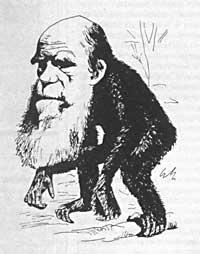
Today, all paleontologists regard Australopithecus as the first ancestor of Man. Four million years ago he began to separate himself from monkeys in Southeast Africa. He looked like monkeys and liked to live in trees, but gradually began to take steps towards human behavior. He came down from the trees, walked on the ground and learned to cast stones to protect himself from his enemies.
Australopithecus
The successor of the Homo habilis appeared 2.5 million ago in Africa. I knew how to make crafts. He manufactured weapons and tools of both stone and bone, and at the same time it could be thought that he would have the first traces of thought, since the volume of his brain ranged from 450-650 cm3.
But the first forerunner to be called a person, the Homo erectus, appeared millions and a half years ago. With a brain volume of 1,000 cm 3, he invented fire, knew how to work fever on both sides and it can be said that he started working on rites.
200,000 years ago became the Homo erectus Homo sapiens, which, taking two evolutionary paths, resulted in the Homo sapiens neanderthalensis and Homo sapiens sapiens forms. The fossils of the Neanderthal man have been found in western Europe (then frozen), but also in Israel and Iraq.
In the Middle East, the Neanderthal man discovered others that resembled the present: the Homo sapiens sapiens created 100,000 years ago from Homo sapiens. The fossils of Homo sapiens sapiens have been found in South and East Africa, but also in Gallus near Nazareth. In the Middle East, therefore, the Homo sapiens sapiens and the Homo sapiens neanderthalensis seem to coexist for 60,000 years until the Neanderthal disappeared 40,000 years ago.
Second migration
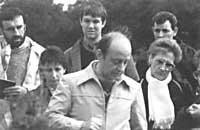
This is when the second migration to which we have referred begins in the introduction of the article. It is estimated that the population of origin was made up of several thousand in the Middle East, from which some groups scattered around the world. These early human beings knew what can be called the beginning of language. Language was created imitating sounds of nature. Human beings recovered the noise produced by rivers, rivers and sea waters.
What genetics says
On the other hand, genetics has affirmed the theory that the origin of humanity took place in a localized geographic location. In the Middle East, East Africa and South Africa, the genes formerly possessed by the Homo sapiens sapiens were currently condensed all the genetic characteristics that are scattered around the world. The genes were evenly distributed. However, in the lineages that separated from that original population the genes were not necessarily uniformly separated.
For example, in people of a lineage the genes of blood groups could be distributed as follows: 30% for group A 50% for group B and 20% for group O. However, in another lineage, the figures could be: 20% for group A, 70% for group B and 10% for group O.
Population from migratory lineages increased over time the difference in figures. Geneticists claim that when a group of people separate from the large group of origin, the less abundant genera in each generation end up disappearing. The most abundant genera are increasingly numerous.
This phenomenon is known as genetic drift and, consequently, in the same population of origin very different groups are formed over time. Among the Basques, for example, today the percentage of blood group O is high, that of group A is low and that of group B is practically zero. As for the Rhesus factor, the highest percentage of negatives worldwide is here.
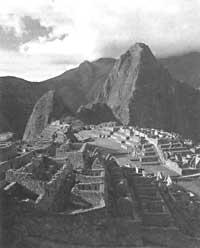
In short, the genes (or their alleles) that in the first days of humanity were uniformly concentrated in a single population of the Homo sapiens sapiens, are distributed all over the world, showing the different frequencies that mark the limits of each population. The higher the frequency difference, the higher the interpopulation limit.
But do not forget that we talk about the frequency of genes. Therefore, it can happen that a person is genetically closer to an African pygmy than to his neighbor. This means, at least, that a person of a race can provide a transplant organ to another person of a different race.
Geography, culture and genetics
However, returning to the differences or similarities of entire populations, the change in gene frequency may also be influenced by geographic factors, since in the populations of the mountainous area the consanguinity was at a high time. On the other hand, the influence of linguistic and cultural factors such as the Basques and the farmers of Britain and Great Britain should not be underestimated.
Finally, it has been shown that genetic distance and geographical distance between populations are proportional to each other. To do this, the frequency of the genes of the HLA system (and their alleles) has been calculated by collecting selected samples in all populations of the world. The results have been computer-treated and graphically represented on the world map. The Orientals are genetically very close and it is clear that they are members of the Amerindians, but they are far from the Africans. Europeans, those in North Africa, those in Central Asia and those in India, are closer to each other than those in the East and the oceans. Africans (holes, Nigerians, pygmies, bantos, etc.) are very similar to each other, but genetically different from those in North Africa.
When 40,000 years ago the first Homo sapiens sapiens from the Middle East moved to Europe and immediately to North Africa, they were pioneers of the Man of Cro-Magnon. Shortly after, some 35,000 years ago, they became authentic Cro-Magnon and got the same look as the man of today. They were magnificent artists, as their drawings, prints and paintings clearly demonstrate. To discover it, in Dordogna there is nothing more to see the coat of Lascaux.
Third migration

Neoliths at the beginning of the Age (a. C. By 7,500 years), the emergence of agriculture in the Middle East (Anatolia, Jordan, Lebanon, Syria and Israel) coincided with the third major migration. They cultivated wheat, barley, sheep, goats, cows and pigs and divided into three main branches after leaving the Middle East. One branch went to Europe, another to Arabia and North Africa and the third to India. These were peaceful migrations that, stopping in the new lands they cultivated, extended to new spaces as they proliferated. According to archaeological excavations, every year an average kilometer was advanced.
Language groups
Each branch of the third major migration created a linguistic family: Indo-European languages, Afro-Asian languages on the one hand and Drabidar languages on the other.
I Ndo-European languages
It has long been believed that the Indo-European languages came from the Proto-Indo-European speaking nomadic knights (kurgandarras) living in the North of the Black Sea at the beginning of the Bronze Age. According to this theory, in the lands conquered by the knights their language was established to the population and then the Indo-European languages that we know today would be created: the Slavic languages (Russian, Czech, Slovak, Polish, Serbian, Bulgarian, Croatian); the Romanesque languages (French derived from Latin, Italian, Spanish, Portuguese, Romanian, English, German); the Greek, Greek, Greek, Greek and Greek Swedish languages.
Today this theory is very much in question. The origin of the Indo-European languages was not precisely the edge of the Black Sea, but the Mediterranean Anatolia. In addition, it was spread by the warrior knights of the tongue and by the peaceful peasants. As farmers move towards Europe, they multiplied and finally formed independent groups stationary (each with their own language).
When the Indo-European wave hit the Atlantic Sea, it retreated and headed to India. After crossing Ukraine, the Caucasus Mountains and Iran, he left the Sanskrit language in India.
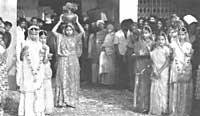
The Basques were the only liberated from this Indo-European colonization. Hence the language and genetic characteristics of this country continue. According to Italian geneticist Luca Cavalli-Sforza, who works at Stanford University in the United States, Basques are descendants of the local mesolithic population. However, this opinion has been very much discussed.
Linguists, for example, have found surprising similarities between Basque and Georgian, but also between Caucasian and Etruscan and Sumerian languages. Archaeologists have highlighted the similarities between Caucasian and Pyrenean cultures. Finally, hematologists have observed affinities between Basques and Caucasians in the ABO and HLA systems.
As a conclusion it can be said that the Basques and Caucasians are descendants of a group that has now disappeared and that in the mesolithic era was great.
The survival in the history of other missing languages (the Iberian, which closely resembled the Basque language, and the Scottish piquera, which is before the time of the Cellanes), is a sample of the resistance of these peoples to the culture of the calcium.
Then what happened is better known. As a result of the conquests of Julius Caesar, the Romans penetrated the lands of the Calcareous and imposed the Latin. The only regions of resistance were Britain, Wales, Ireland and Scotland. It must be clarified that in the fifth century, when Britain was invaded by the Anglo and Saxon, people went to Britain fleeing from Cornwall.
Afro-Asian languages
According to archaeologists, these languages have their origin in the Middle East; Israel, Syria, Lebanon and surrounding areas. They extend to Arabia and all of North Africa before the introduction of Indo-European languages. From these languages come the Berber, Old Egyptian and Semitic languages.
Drastic languages
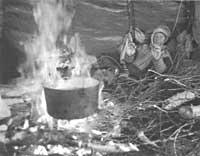
Zagros Mendia is the birthplace of these languages. These mountains are located in the Persian Gulf, from where peasants spread across southern Iran and through Pakistan to India. However, after its implementation, the waves of the Indo-European were trapped and disappeared for the benefit of the sanscrítica. Southern India and the isolated territory of Pakistan populated by the Brahuitans were saved from the flood. Hence the current use of drastic languages in these places. It has been shown that C. The elamiera, which was spoken around the age of 3,000, in southwestern Iran's Khuzistan, is much like drastic languages.
Twenty years ago, Soviet linguists Vladislav Illitx-Svitytx and Aron Dolgopolski published a revolutionary hypothesis. According to them, the Indo-European, Afro-Asian and drastic languages came from a single superfamily. The fact that these three language groups have been disseminated from the Middle East is the reason for this hypothesis. But also, the speakers of these three language families have a close genetic affinity. This has been indicated by professors Luca Cavalli-Sforza and Allan Wilson through the analysis of blood samples.
First migration
Greater uncertainties about the populations of Africa and Asia. They may be the result of three Middle Eastern migrations that emerged 100,000 years ago in the Paleolithic era. The first two occupied Asia: One by the South and one by the North, which spread from the Bering Strait to America. The third could reach Arabia, Africa and South Africa.
Migration from North Asia was to give rise to the ural, altering and American languages. In South Asia, the Asian languages and the Pacific islands. African migration, for its part, to the Khoisan, provoked the Nilo-Saharawi and Niger languages.
Hungarian, Turkish, Lapon
and the Tibetan mystery is partially illuminated.
IX. In the 19th century, the magicians of western Siberia crossed the Carpathians and remained in Hungary imposing their language (Urali) instead of the Indo-European language.
Turkish, IX from Mongolia. It is a language imposed by the Altaiarras from the nineteenth century.
Laponians have mixed the genes of Caucasus and Ural, according to the geneticists, and their language is Uralí.
Tibetans III. In the eighteenth century they arrived on horseback from Mongolia and its territory was almost desert. Genetically they are 100% Mongolian. However, by the pressure of their neighbors they now speak a language similar to the dialects of southern China.
Our identity document is in the genes
The genetic heritage of humanity is expressed in 100,000 genes aligned after baptism in 46 chromosomal walls. Genes have a coded message. This code can include four letters of the alphabet (A, C, G and T) and each letter corresponds to a chemical base: adenine A, cytosine C, guanine G and thymine T.
As in the numbers lists, the number of letters, the order of letters and the repetition of letters complete the messages.
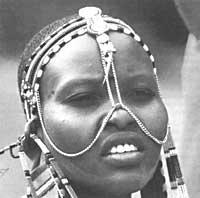
While cellular machinery is working, specific proteins decode messages and it is these proteins that make our genetic heritage a reality. For example, the proteins of the systems A, B, O and rhesus form blood groups, the proteins of the system HLA ( Human Leucocyte Antigen) determine our immune system, the proteins encoded in specific genes are those that determine the color of the eyes, etc.
In other words, the same gene may be in different forms, called alleles. The genes that give color to the eyes are at least four alleles, each corresponding a blue, brown, black or green color. Each of the six genes in the HLA system (A, B, C, DR, DQ and DP) has dozens of alleles.
However, skin color is a consequence of its long-term adaptation to the environment. Australian aborigines, African blacks and South Indian Tamils have dark skin, but genetically they are very different.
Buletina
Bidali zure helbide elektronikoa eta jaso asteroko buletina zure sarrera-ontzian











